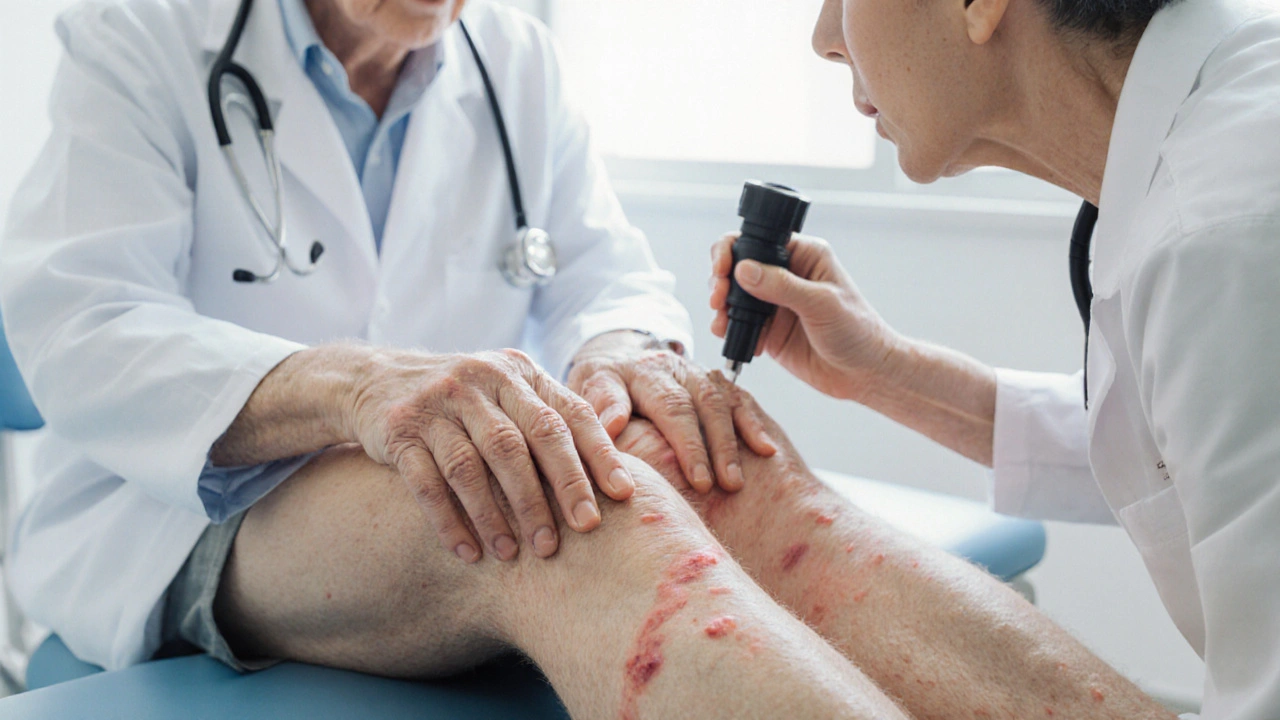Cutaneous Larva Migrans: Causes, Symptoms, and Treatment Options
When you walk barefoot on warm, damp sand or soil, you might not think about tiny worms lurking just below the surface—but that’s exactly where cutaneous larva migrans, a skin infection caused by parasitic larvae from animal hookworms. Also known as creeping eruption, it happens when larvae burrow into your skin and start moving, leaving a winding, itchy trail behind. This isn’t something you catch from another person. It comes from animal feces—usually from dogs or cats—that contaminates soil or sand in tropical or subtropical areas. If you’ve been on a beach vacation in Southeast Asia, the Caribbean, or even the southern U.S., you’ve been in a risk zone.
The infection is most common in travelers, but also affects kids playing in dirt or people who work outdoors without shoes. The larvae don’t live inside your body like other parasites—they stay in the top layers of skin, which is why you won’t get sick in the way you might with a stomach bug. But the itching? That’s real. It starts as a small red bump, then turns into a raised, snake-like ridge that can crawl across your skin at a rate of a few millimeters a day. Some people mistake it for a fungal infection or allergic reaction. But if the rash is moving and you’ve been in warm, sandy soil, it’s likely cutaneous larva migrans.
Treatment is straightforward. Topical medications like thiabendazole or oral drugs like ivermectin can kill the larvae and stop the itching within days. Freezing the area with liquid nitrogen works too, but it’s less common. The good news? Even without treatment, the larvae die on their own in a few weeks because they can’t survive in human skin long-term. But why wait? The itch can be unbearable, and scratching can lead to a bacterial infection. If you’ve got a rash that’s crawling and you’ve been barefoot on a beach, see a doctor. Don’t guess.
Prevention is even easier. Wear shoes outdoors in high-risk areas. Avoid sitting or lying directly on damp sand or soil. Wash your feet after walking on beaches, especially after rain. These aren’t just travel tips—they’re simple habits that stop the problem before it starts.
Below, you’ll find real-world guides on how this infection compares to other skin conditions, what medications actually work, how to spot it early, and what to do if you’re in a place where it’s common. No fluff. Just clear, practical info from people who’ve seen it, treated it, and want you to avoid it.

Skin Parasites: Their Growing Impact on the Medical Community
Caspian Mortensen Oct, 5 2025 13Explore how skin parasites like scabies, hookworm, and myiasis affect diagnosis, treatment, and public health, and discover the medical community's response and future strategies.
More Detail